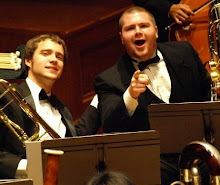Beyond just Mahler's music, I've delved into the contemporary academic material the has been produced concerning Mahler, and I'm trying to work my way up to the La Grange volumes. One of the things I have had a bit of trouble has been wrapping my head around the traditional groupings of his works, and more specifically his symphonies. While to take only his symphonies and compare them is somewhat an injustice in leaving out the vocal works, I view it as serving a purpose of reaching a better understanding on how Mahler's musical ideas changed and evolved.
The traditional groupings of the major works as I understand are as follows
Songs of a Wayfarer
Symphony 1
Wunderhorn settings
Symphony 2
Symphony 3
Wunderhorn settings
Symphony 4
Symphony 5
Symphony 6
Symphony 7
Symphony 8
Das Lied von Erde
Symphony 9
Symphony 10
Of the later symphonies I have no qualms with the groupings. Its really the first two groupings that I take issue with. To lay out the traditional reasoning
Sympohny 1's original program was to be about a hero, or titan. Since Mahler ultimately rejects all the programs he wrote for this symphonies, there is no true story, but the first symphony none the less retained the nickname 'Titan'. Its assumed that the first symphony is the rise and fall of said hero. The second symphony, nicknamed 'Resurrection' is just that. The Resurrection of the hero from the first symphony.
At this point, the musicology lesson is going to end temporarily as I research and formulate a stronger argument that I would like to present.
[I'm rather embarrassed, General Solo, but it appears you are to be the main course at a banquet in my honor.]

No comments:
Post a Comment